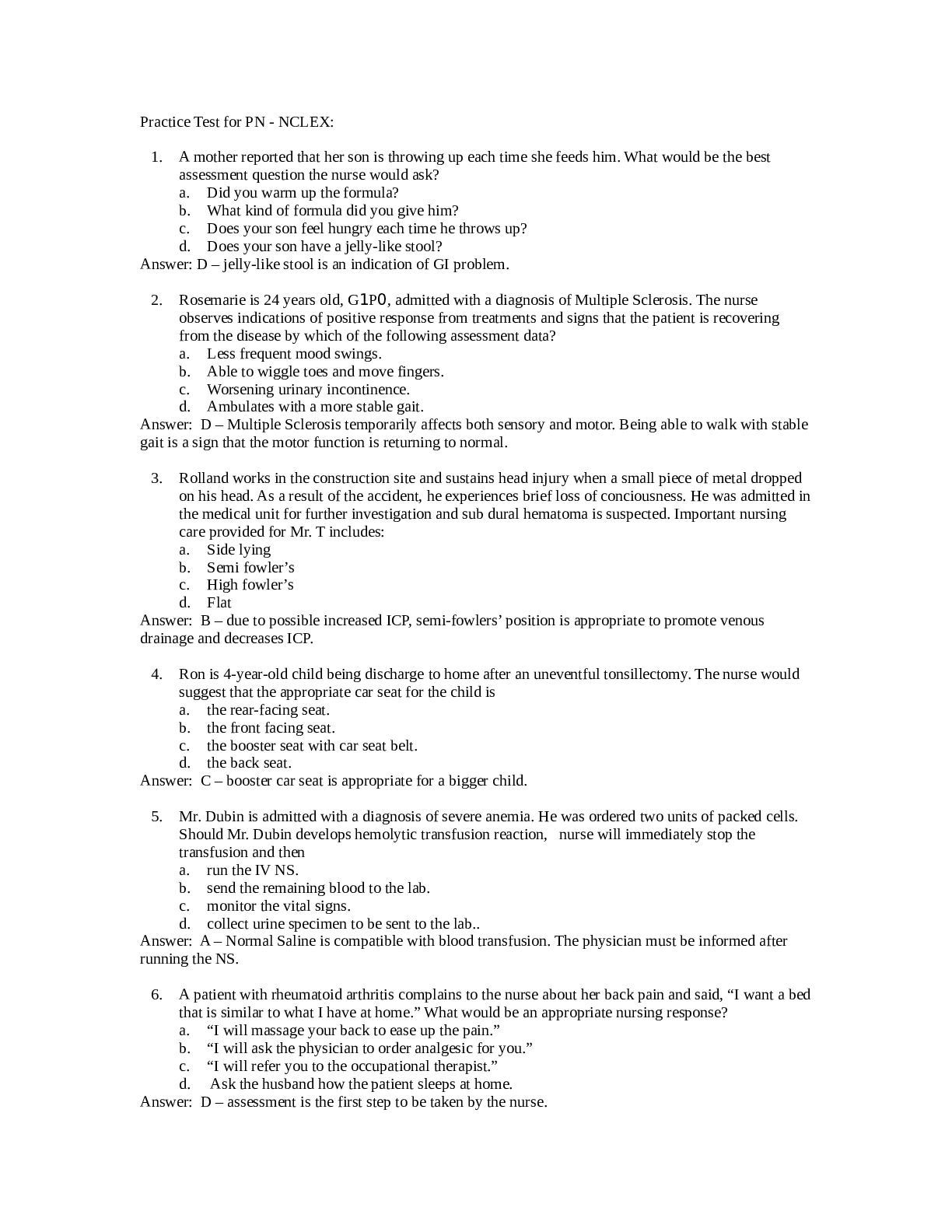*NURSING > NCLEX-PN > HESI Comprehensive Review for the NCLEX-PN® Examination-ADVANCED CLINICAL CONCEPTS (All)
HESI Comprehensive Review for the NCLEX-PN® Examination-ADVANCED CLINICAL CONCEPTS
Document Content and Description Below
ADVANCED CLINICAL CONCEPTS • ARDS is an unexpected, catastrophic pulmonary complication occurring in a person with no previous pulmonary problems. The mortality rate is high (50%) • In ARDS, a com... mon laboratory finding is lowered PO2. However, these clients are not very responsive to high concentrations of oxygen. • Think about the physiology of the lungs by remembering PEEP: Positive End Expiratory Pressure is the instillation and maintenance of small amounts of air into the alveolar sacs to prevent them from collapsing each time the client exhales. The amount of pressure can be set with the ventilator and is usually around 5 to 10 cm of water. • Suction only when secretions are present. • Before drawing arterial blood gases from the radial artery, perform the Allen test to assess collateral circulation. Make the client’s hand blanch by obliterating both the radial and ulnar pulses. Then release the pressure over the ulnar artery only. If flow through the ulnar artery is good, flushing will be seen immediately. The Allen test is then positive, and the radial artery can be used for puncture. If the Allen test is negative, repeat on the other arm. If this test is also negative, seek another site for arterial puncture. The Allen test ensures collateral circulation to the hand if thrombosis of the radial artery should follow the puncture. • If the client does not have O2 to his/her brain, the rest of the injuries do not matter because death will occur. However, they must be removed from any source of imminent danger, such as a fire. • PC)2 >45 or PO2 <60 on 50% O2 signifies respiratory failure. • A child in severe distress should be on 100% O2. • Early signs of shock are agitation and restlessness resulting from cerebral hypoxia. • If cardiogenic shock exists with the presence of pulmonary edema, i.e., from pump failure, position client to REDUCE venous return (HIGH FOWLER’s with legs down) in order to decrease venous return further to the left ventricle. • Severe shock leads to widespread cellular injury and impairs the integrity of the capillary membranes. Fluid and osmotic proteins seep into the extra vascular spaces, further reducing cardiac output. A vicious cycle of decreased perfusion to ALL cellular level activities ensues. All organs are damaged, and if perfusion problems exist, the damage can be permanent. • All vasopressors/vasodilator drugs are potent and dangerous and require weaning on and off. Do not change infusion rates simultaneously [Show More]
Last updated: 2 years ago
Preview 1 out of 27 pages

Buy this document to get the full access instantly
Instant Download Access after purchase
Buy NowInstant download
We Accept:

Reviews( 0 )
$8.00
Can't find what you want? Try our AI powered Search
Document information
Connected school, study & course
About the document
Uploaded On
Nov 19, 2020
Number of pages
27
Written in
Additional information
This document has been written for:
Uploaded
Nov 19, 2020
Downloads
0
Views
119


.png)



